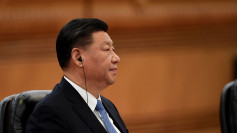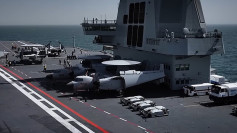Ukraine's security services carried out a large-scale drone assault on Russian military airfields over the weekend, damaging or destroying dozens of long-range bombers used in missile strikes against Ukraine, in what Kyiv described as a "devastating blow" to Russian airpower. The June 1 operation, reportedly 18 months in the making, targeted five airbases across Russia-including sites more than 2,500 miles from Ukraine's borders.
Russian Deputy Foreign Minister Sergei Ryabkov acknowledged on Thursday that aircraft were damaged but not destroyed. "The equipment in question... was not destroyed but damaged. It will be restored," Ryabkov told state news agency TASS. The U.S. government estimates up to 20 warplanes were struck, with 10 likely destroyed, according to two officials cited by Reuters.
Satellite imagery reviewed by analysts shows Tu-95 "Bear" and Tu-22M3 "Backfire" bombers visibly damaged at multiple airbases. Business Insider reported that Russia had employed deception tactics ahead of the attack-including placing tires on parked aircraft, painting decoy silhouettes on tarmacs, and using scattered debris to simulate additional aircraft-efforts that ultimately failed to prevent the strikes.
Ukraine's internal security agency, the SBU, claimed it used 117 first-person-view drones operated by personnel smuggled deep into Russian territory. Lt. Gen. Vasyl Malyuk, SBU chief, called the strike "a serious slap in the face to the Kremlin's power projection" and estimated that roughly one-third of Russia's cruise missile carriers were taken out, inflicting over $7 billion in losses. These figures could not be independently verified.
The drones reportedly struck airfields in Belaya (Irkutsk), Olenya (Murmansk), Dyagilevo (Ryazan), Ivanovo, and Ukrainka (Amur), though the latter base may have been missed. Russia has provided no official breakdown of damaged aircraft or the operational impact on its strategic fleet, which includes 52 Tu-95s and 15 Tu-160s, along with hundreds of non-strategic fighters and bombers.
Russia's fleet of Tu-95 and Tu-22 aircraft are Soviet-era platforms dating back decades. While updated versions like the Tu-95MSM have undergone modernization, Western sanctions have hampered Moscow's ability to procure key aerospace components. United Aircraft Corporation, a subsidiary of the state-owned Rostec, has continued to maintain these bombers, but it remains unclear how swiftly the damage can be repaired.
Open-source analyst Brady Africk told Business Insider the operation was "very successful, despite Russia's attempts at deception," noting the attack highlights the modern threat posed by low-cost drones capable of penetrating deep into enemy territory. Brady Africk said Russia's flat decoy aircraft are often difficult to detect in the radar-based satellite imagery believed to be used by the Ukrainian military.
Ukrainian President Volodymyr Zelenskyy praised the SBU's operation, saying it was "perfectly executed" and described it as "an absolutely unique operation." The strategic bombers targeted in the attack have been instrumental in Russian long-range missile strikes throughout the war.
The Kremlin, for its part, has acknowledged the strikes but has sought to downplay the scale. Russian President Vladimir Putin reportedly informed U.S. President Donald Trump in a Wednesday phone call that Moscow would "have to respond to the attacks," according to Trump. Russia has yet to indicate what form that response might take.





